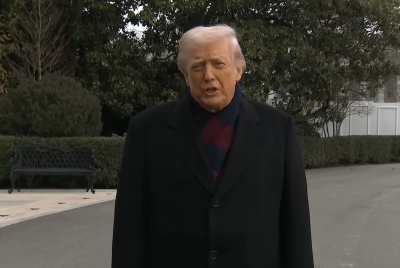US and China Seek Trade Progress Amid Fentanyl and Inflation Concerns
High-level talks set for October 2025 amid escalating trade tensions, rising inflation, and corporate layoffs; US farmers and businesses seek stability

US President Donald Trump views fentanyl as an extraordinary threat to national security and public health. In a move that could impact trade relations, Trump announced he would lower tariffs on Chinese imports linked to fentanyl production in exchange for China cracking down on exports of chemical ingredients used in manufacturing the drug.
This potential deal comes ahead of a high-level meeting scheduled for 30 October 2025 between Trump and Chinese President Xi Jinping, set during the ongoing Asia-Pacific Economic Cooperation (APEC) summit in South Korea. The negotiations are seen as a critical step towards easing trade tensions, which have significantly impacted both nations' economies.
Trade Tensions and Economic Impact
US manufacturers and farmers are particularly anxious, as tariffs imposed in recent years have strained their operations. The escalating trade conflict with Beijing has not only hurt business profitability but also contributed to broader economic pain. Ordinary Americans could end up bearing the costs of tariffs if a comprehensive trade deal remains elusive, potentially leading to higher prices on consumer goods.
Inflation and the Federal Reserve's Outlook
Turning to inflation, the latest figures show the annual rate rose to 3% in September 2025, up from 2% the previous month. While this is marginally below the 3.1% consensus estimate, the Bureau of Labour Statistics suggests the possibility of a rate cut remains high.
However, official labour market reports are currently delayed due to the US federal government shutdown, complicating economic analysis. Despite these hurdles, the US economy remains relatively resilient, with the unemployment rate standing at 4.3% in August—still low by historical standards. Nonetheless, widespread layoffs and cost-cutting measures threaten to push unemployment higher.
Corporate Layoffs and Market Uncertainty
Recent layoffs from retail giant Amazon and parcel delivery firm UPS highlight the ongoing instability. Challenger, Gray & Christmas reported that US employer job cuts reached 950,000 through September, with some citing tariffs and trade disputes as contributing factors. While the unemployment rate remains low, the potential for a spike looms if corporate downsizing continues.
UPS has indicated that shipping declines from Amazon are partly due to tariffs imposed during Trump's administration. This ongoing uncertainty underscores the fragility of the US labour market and the broader economy.
The Search for a Lasting Deal
Trump remains optimistic about reaching a favourable agreement with China, not only regarding the fentanyl-related tariffs but also broader trade issues. US farmers are particularly eager for a resolution, as Beijing has yet to place a substantial soybean order in 2025. The absence of Chinese purchases, coupled with competition from Brazil and Argentina, fuels fears that China might bypass US agricultural exports altogether.
American businesses across sectors—including automotive, consumer goods, capital goods, food, feeds & beverages, and industrial sectors—are feeling the pressure of narrower profit margins. Some firms are passing tariff costs onto consumers, while others have delayed price adjustments or pre-stocked inventories before tariffs increased.
Managing Trade Differences
Improving US-China relations is crucial to reducing global economic uncertainty. Both nations must work to rebuild trust and manage differences over trade policies. Chinese Foreign Minister Wang Yi emphasised that bilateral progress depends on both sides being committed to resolving conflicts through dialogue and avoiding coercive pressure.
Trump believes both countries are motivated to strike a deal. The US seeks the easing of China's restrictions on rare-earth exports, which are vital to many industries, while Beijing may expect concessions on US exports.
The Bottom Line
Goldman Sachs analysts recently noted that many US businesses are currently absorbing the costs of tariffs, as some measures are just taking effect. They warn that it takes time for these costs to fully pass through to consumers or be reflected in import prices. The bank estimates that by the end of 2025, American consumers may shoulder more than half of the total tariff burden.
White House spokesperson Kush Desai disputes this, stating, 'The US may face a transition period due to the tariffs,' implying that the full economic impact remains uncertain as negotiations continue.
This evolving landscape underscores the complex interplay between trade policies, inflation, and corporate stability. As the October meetings approach, global markets and domestic industries will be watching closely for signs of progress—and for any further shocks to the US economy.
© Copyright IBTimes 2025. All rights reserved.





















